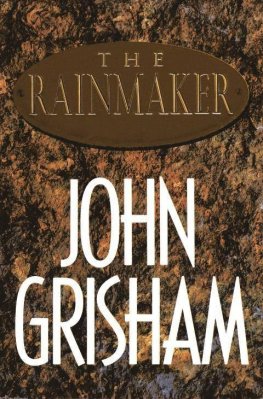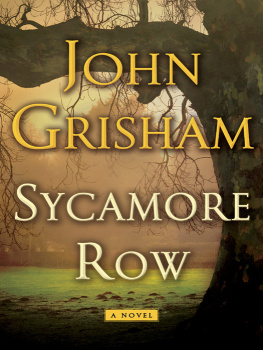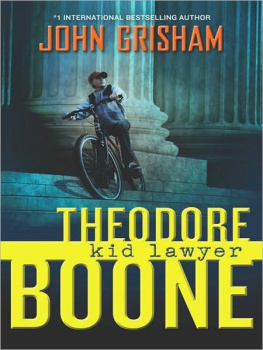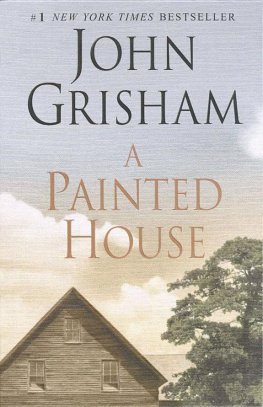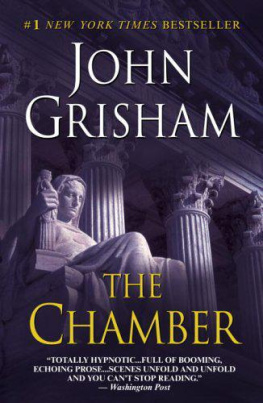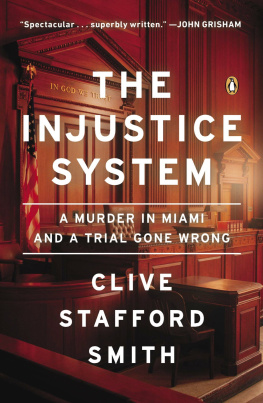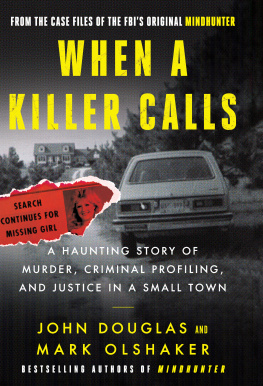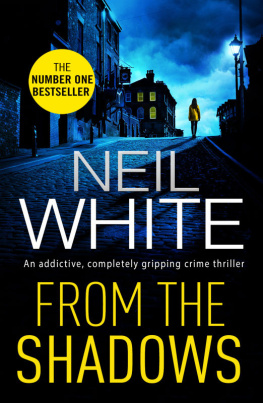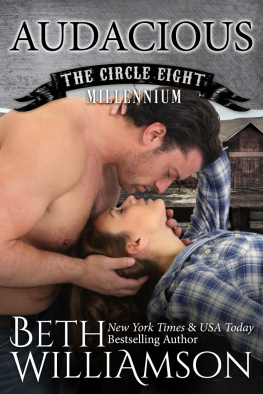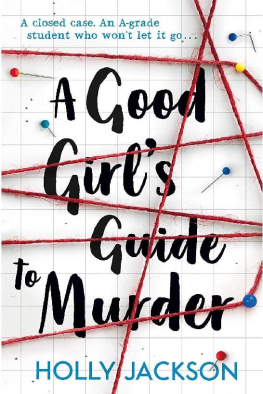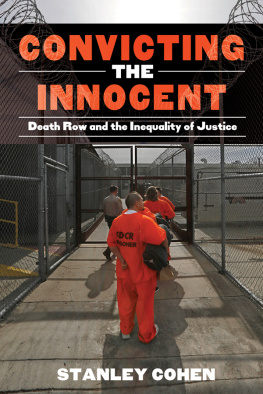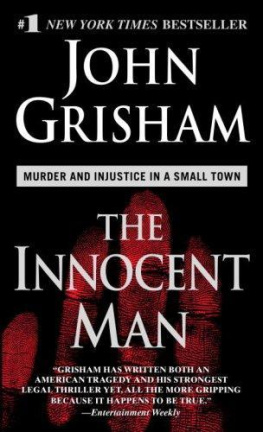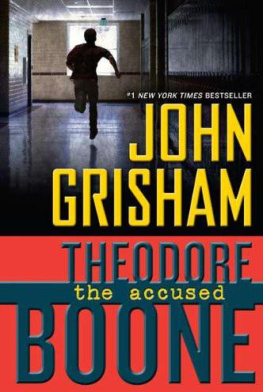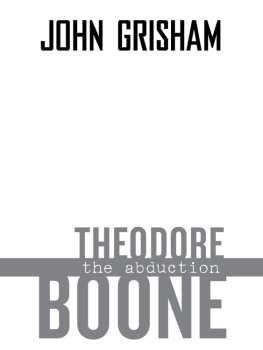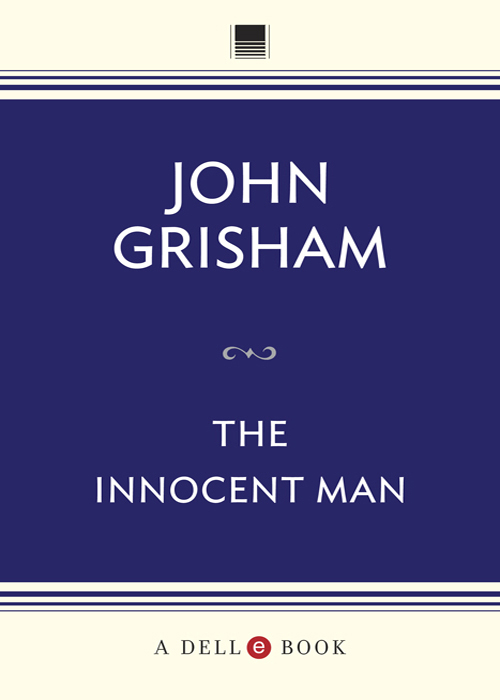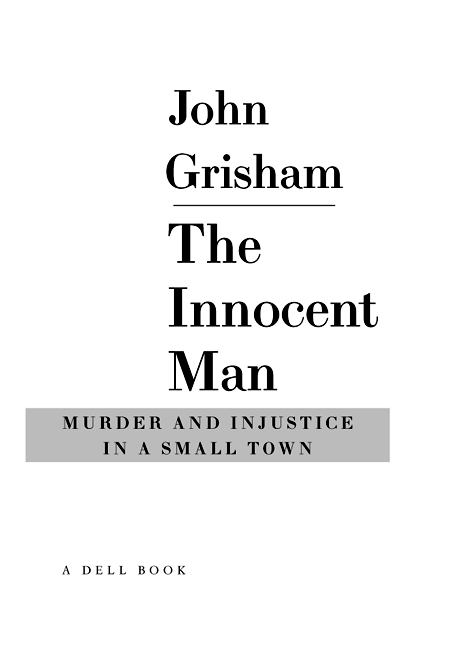Books by John Grisham
A TIME TO KILL
THE FIRM
THE PELICAN BRIEF
THE CLIENT
THE CHAMBER
THE RAINMAKER
THE RUNAWAY JURY
THE PARTNER
THE STREET LAWYER
THE TESTAMENT
THE BRETHREN
A PAINTED HOUSE
SKIPPING CHRISTMAS
THE SUMMONS
THE KING OF TORTS
BLEACHERS
THE LAST JUROR
THE BROKER
THE INNOCENT MAN
PLAYING FOR PIZZA
THE APPEAL
THE ASSOCIATE
FORD COUNTY: STORIES
Contents
Dedicated to
Annette Hudson and Renee Simmons
and to the memory of their brother
C H A P T E R 1
T he rolling hills of southeast Oklahoma stretch from Norman across to Arkansas and show little evidence of the vast deposits of crude oil that were once beneath them. Some old rigs dot the countryside; the active ones churn on, pumping out a few gallons with each slow turn and prompting a passerby to ask if the effort is really worth it. Many have simply given up, and sit motionless amid the fields as corroding reminders of the glory days of gushers and wildcatters and instant fortunes.
There are rigs scattered through the farmland around Ada, an old oil town of sixteen thousand with a college and a county courthouse. The rigs are idle, thoughthe oil is gone. Money is now made in Ada by the hour in factories and feed mills and on pecan farms.
Downtown Ada is a busy place. There are no empty or boarded-up buildings on Main Street. The merchants survive, though much of their business has moved to the edge of town. The cafs are crowded at lunch.
The Pontotoc County Courthouse is old and cramped and full of lawyers and their clients. Around it is the usual hodgepodge of county buildings and law offices. The jail, a squat, windowless bomb shelter, was for some forgotten reason built on the courthouse lawn. The methamphetamine scourge keeps it full.
Main Street ends at the campus of East Central University, home to four thousand students, many of them commuters. The school pumps life into the community with a fresh supply of young people and a faculty that adds some diversity to southeastern Oklahoma.
Few things escape the attention of the Ada Evening News, a lively daily that covers the region and works hard to compete with The Oklahoman, the states largest paper. Theres usually world and national news on the front page, then state and regional, then the important itemshigh school sports, local politics, community calendars, and obituaries.
The people of Ada and Pontotoc County are a pleasant blend of small-town southerners and independent westerners. The accent could be from east Texas or Arkansas, with flat is and other long vowels. Its Chickasaw country. Oklahoma has more Native Americans than any other state, and after a hundred years of mixing many of the white folks have Indian blood. The stigma is fading fast; indeed, there is now pride in the heritage.
The Bible Belt runs hard through Ada. The town has fifty churches from a dozen strains of Christianity. They are active places, and not just on Sundays. There is one Catholic church, and one for the Episcopalians, but no temple or synagogue. Most folks are Christians, or claim to be, and belonging to a church is rather expected. A persons social status is often determined by religious affiliation.
With sixteen thousand people, Ada is considered large for rural Oklahoma, and it attracts factories and discount stores. Workers and shoppers make the drive from several counties. It is eighty miles south and east of Oklahoma City, and three hours north of Dallas. Everybody knows somebody working or living in Texas.
The biggest source of local pride is the quarter-horse bidness. Some of the best horses are bred by Ada ranchers. And when the Ada High Cougars win another state title in football, the town struts for years.
Its a friendly place, filled with people who speak to strangers and always to each other and are anxious to help anyone in need. Kids play on shaded front lawns. Doors are left open during the day. Teenagers cruise through the night causing little trouble.
Had it not been for two notorious murders in the early 1980s, Ada would have gone unnoticed by the world. And that would have been just fine with the good folks of Pontotoc County.
As if by some unwritten city ordinance, most of the nightclubs and watering holes in Ada were on the periphery of the town, banished to the edges to keep the riffraff and their mischief away from the better folks. The Coachlight was one such place, a cavernous metal building with bad lighting, cheap beer, jukeboxes, a weekend band, a dance floor, and outside a sprawling gravel parking lot where dusty pickups greatly outnumbered sedans. Its regulars were what you would expectfactory workers looking for a drink before heading home, country boys looking for fun, late-night twenty-somethings, and the dance and party crowd there to listen to live music. Vince Gill and Randy Travis passed through early in their careers.
It was a popular and busy place, employing many part-time bartenders and bouncers and cocktail waitresses. One was Debbie Carter, a twenty-one-year-old local girl whod graduated from Ada High School a few years earlier and was enjoying the single life. She held two other part-time jobs and also worked occasionally as a babysitter. Debbie had her own car and lived by herself in a three-room apartment above a garage on Eighth Street, near East Central University. She was a pretty girl, dark-haired, slender, athletic, popular with the boys, and very independent.
Her mother, Peggy Stillwell, worried that she was spending too much time at the Coachlight and other clubs. She had not raised her daughter to live such a life; in fact, Debbie had been raised in the church. After high school, though, she began partying and keeping later hours. Peggy objected and they fought occasionally over the new lifestyle. Debbie became determined to have her independence. She found an apartment, left home, but remained very close to her mother.
On the night of December 7, 1982, Debbie was working at the Coachlight, serving drinks and watching the clock. It was a slow night, and she asked her boss if she could go off-duty and hang out with some friends. He did not object, and she was soon sitting at a table having a drink with Gina Vietta, a close friend from high school, and some others. Another friend from high school, Glen Gore, stopped by and asked Debbie to dance. She did, but halfway through the song she suddenly stopped and angrily walked away from Gore. Later, in the ladies restroom, she said she would feel safer if one of her girlfriends would spend the night at her place, but she did not say what worried her.
The Coachlight began closing early, around 12:30 a.m., and Gina Vietta invited several of their group to have another drink at her apartment. Most said yes; Debbie, though, was tired and hungry and just wanted to go home. They drifted out of the club, in no particular hurry.
Several people saw Debbie in the parking lot chatting with Glen Gore as the Coachlight was shutting down. Tommy Glover knew Debbie well because he worked with her at a local glass company. He also knew Gore. As he was getting in his pickup truck to leave, he saw Debbie open the drivers door of her car. Gore appeared from nowhere, they talked for a few seconds, then she pushed him away.
Mike and Terri Carpenter both worked at the Coachlight, he as a bouncer, she as a waitress. As they were walking to their car, they passed Debbies. She was in the drivers seat, talking to Glen Gore, who was standing beside her door. The Carpenters waved good-bye and kept walking. A month earlier Debbie had told Mike that she was afraid of Gore because of his temper.


